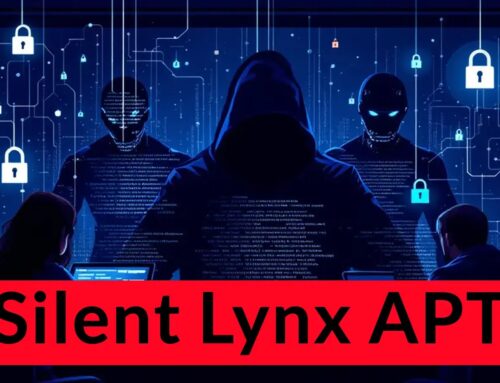
Threat Actors Weaponize PDF Editor With New Torjan to Turn Device Into Proxy
Threat Actors Weaponize PDF Editor: When Productivity Tools Turn Malicious
The digital landscape is a constant battleground, but every so often, threat actors unveil novel tactics that redefine the boundaries of cyber risk. A recent campaign uncovered by cybersecurity researchers reveals a concerning evolution: the weaponization of seemingly benign PDF editor applications to transform unsuspecting devices into residential proxies. This sophisticated approach exploits the inherent trust users place in productivity software, opening a gateway for persistent network access and illicit monetization schemes. For IT professionals, security analysts, and developers, understanding this emerging threat, its operational mechanics, and effective remediation is paramount.
The Deceptive Lure: How Legitimate Software Becomes a Weapon
At the heart of this campaign lies a deceptive strategy: distributing malicious software under the guise of legitimate productivity tools. While the specific PDF editor application involved hasn’t been publicly named, the modus operandi is clear. Users, seeking solutions for document management, inadvertently download and install an application that contains a hidden payload. This payload, rather than enhancing productivity, silently reconfigures the infected device to act as a residential proxy.
The choice of a PDF editor is particularly insidious. PDF software is universally used across industries, from individual users to large enterprises, making it a wide and attractive distribution vector. The inherent trust in such applications allows the malicious components to bypass initial skepticism and sometimes even traditional security measures, which may struggle to differentiate between legitimate application behavior and a deeply embedded threat.
Understanding the “Residential Proxy” Threat
For those less familiar, a residential proxy uses an IP address assigned by an Internet Service Provider (ISP) to a homeowner. Unlike datacenter proxies, which are easily identifiable and often blocked, residential proxies mimic genuine user traffic, making them extremely difficult to detect and thwart. Threat actors covet these proxies for a multitude of illicit activities:
- Credential Stuffing: Bypassing rate limits and CAPTCHAs by rotating through thousands of unique, legitimate-looking IP addresses to test stolen username/password combinations.
- Ad Fraud: Generating fake clicks and impressions on online advertisements to defraud advertisers.
- E-commerce Abuse: Circumventing regional restrictions, purchasing limited-edition items, or engaging in price scraping at scale without being detected.
- Anonymity and Evasion: Masking their true origin for malicious operations, including phishing campaigns, distribution of malware, or accessing restricted content.
By transforming unsuspecting users’ devices into a network of residential proxies, threat actors establish a robust, decentralized infrastructure that is both resilient and challenging for security teams to trace and dismantle.
Technical Deep Dive: The Modus Operandi
While specific details of the Trojan’s implementation are proprietary to the ongoing research, experience dictates common techniques employed in such campaigns:
- Trojanized Installers: The malicious code is bundled directly within the legitimate PDF editor’s installer. This could involve direct code injection, malicious libraries, or a secondary, hidden download mechanism.
- Persistence Mechanisms: Once installed, the malware establishes persistence to ensure it runs automatically on system reboot. This often involves modifying registry keys, creating scheduled tasks, or placing malicious files in startup folders.
- C2 (Command and Control) Communication: The Trojan communicates with a remote C2 server to receive instructions and relay data. This communication might be obfuscated to blend in with normal network traffic, potentially using encrypted channels or legitimate-looking ports.
- Proxy Service Installation: The core functionality involves installing and configuring a proxy service on the infected machine. This service quietly routes traffic through the compromised device, often utilizing open-source proxy tools or custom-built solutions.
- Resource Consumption: Victims may notice subtle performance degradation, increased network usage, or higher power consumption as their device processes and relays traffic for the threat actors.
Remediation Actions: Securing Your Digital Perimeter
Mitigating this sophisticated threat requires a multi-layered approach, combining user education with robust technical controls.
- Source Verification: Always download software, especially productivity tools, only from official vendor websites or trusted application stores. Avoid third-party download sites, torrents, or suspicious links in emails.
- Endpoint Detection and Response (EDR): Deploy and maintain EDR solutions capable of behavioral analysis. These tools can detect unusual network activity (like a PDF editor acting as a proxy) and suspicious process execution, even if the initial download was seemingly legitimate.
- Network Monitoring: Implement continuous network traffic analysis to identify unusual outbound connections from internal devices, especially those not typically acting as servers or proxies. Look for unexpected traffic volumes or connections to suspicious external IP addresses/domains.
- Application Whitelisting: Strictly control which applications are allowed to run on endpoints. Whitelisting only approved software can prevent unauthorized or trojanized applications from executing.
- Regular Software Audits: Periodically audit installed software on all endpoints. Remove any unnecessary or unrecognized applications.
- User Education and Awareness: Train users to recognize the signs of phishing, to be cautious about software downloads, and to report suspicious system behavior. Emphasize the risks of downloading “cracked” or free versions of paid software.
- DNS Filtering: Configure DNS filtering to block known malicious domains and C2 servers.
- Principle of Least Privilege: Ensure users and applications operate with the minimum necessary permissions to perform their functions. This limits the damage a compromised application can inflict.
Relevant Tools for Detection and Mitigation
Leveraging the right tools is crucial for identifying and combating such advanced threats.
| Tool Name | Purpose | Link |
|---|---|---|
| Osquery | Endpoint visibility and behavioral monitoring (SQL-based queries for system activity) | https://osquery.io/ |
| Wireshark | Network protocol analyzer for deep packet inspection and suspicious traffic identification | https://www.wireshark.org/ |
| Sysinternals Suite (specifically Process Explorer, TCPView) | Advanced process management, network connections, and system monitoring | https://learn.microsoft.com/en-us/sysinternals/downloads/sysinternals-suite |
| A comprehensive EDR Solution (e.g., CrowdStrike Falcon, SentinelOne, Microsoft Defender for Endpoint) | Proactive threat detection, response, and behavioral analysis on endpoints | (Vendor specific links) |
| Next-Generation Firewall (NGFW) with deep packet inspection | Network perimeter defense, application control, and intrusion prevention | (Vendor specific links) |
Conclusion: Stay Vigilant, Stay Secure
The weaponization of legitimate PDF editor applications to create residential proxy networks underscores a critical shift in how threat actors operate. They are increasingly exploiting trusted software categories and user habits to establish persistent footholds and monetize compromised systems. For security professionals, this necessitates a move beyond signature-based detection to advanced behavioral analysis, comprehensive network monitoring, and rigorous application control. User education remains a foundational defense, empowering individuals to recognize and avoid the lures of seemingly innocent but deeply malicious software. Vigilance, continuous learning, and robust security practices are the only path to safeguarding against these evolving and insidious threats.





